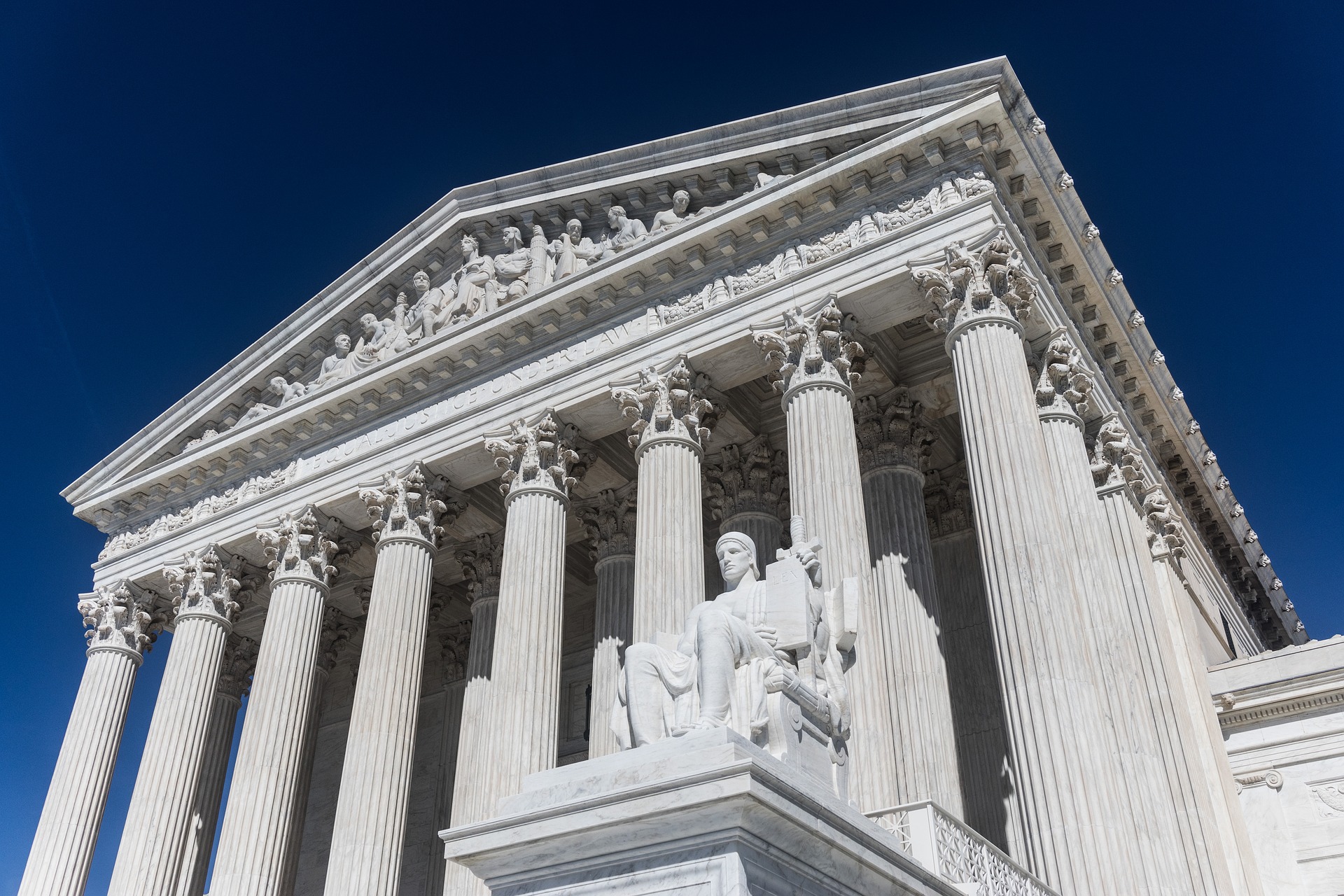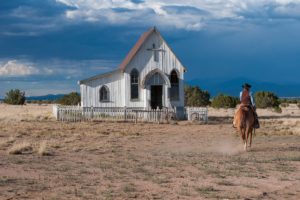Judicial Activism
To read the original article Impeachment of Federal Judges by David Barton please click here
(source: re-printed with permission Copyright 2002 Wall Builders, www.wallbuilders.com, Jan 29, 2008)
The Founders’ intent for impeachment was to protect the fundamental principle of “the consent of the governed.” The Constitution carries no title but “We the People,” and impeachment removes from office those officials who ignore that standard. (Recall that the Constitution does not guarantee a federal judge his position for life, but only for the duration of “good behavior.” Art. III, Sec. 1)
For this reason impeachment was used whenever judges disregarded public interests, affronted the will of the people, or introduced arbitrary power by seizing the role of policy-maker. Previous generations used this tool far more frequently than today’s generation; and because the grounds for impeachment were deliberately kept broad, articles of impeachment have described everything from drunkenness and profanity to judicial high-handedness and bribery as reasons for removal from the bench. (Sixty-one federal judges or Supreme Court Justices have been investigated for impeachment, of whom thirteen have been impeached and seven convicted.)
Today’s judiciary, not having experienced any serious threat of impeachment as judges in earlier generations, repeatedly flaunts its contempt for the will of the people. It recently has overturned direct elections in Washington, New York, California, Arkansas, Texas, Missouri, etc., simply because it preferred a different outcome. This is not to suggest that the results of all citizen elections are final and infallible, for it is the duty of the Court to protect the Constitution. However, the above elections violated at most the judiciary’s ideological leanings rather than any manifest provision of the Constitution (e.g., English as a State’s official language, ending government assistance for illegal immigrants, enacting term-limits, prohibiting physician-assisted suicides).
Examples of Judicial Abuses
While most are aware of the 9th Circuit’s recent decision that saying “under God” in the Pledge of Allegiance threatens our American form of government, there are numerous additional examples, some staggeringly unbelievable. For example, in Jane Doe v. Santa Fe, a federal judge ruled that graduation prayers must not include any mention of “Jesus” or other “specific deities” and that any student offering such a prayer would face immediate arrest and up to six months in jail. The judge threatened “violators” by saying they would wish they “had died as a child” once his court finished with them.
In a Texas county where conservatives narrowly won multiple seats in an election, a federal judge reversed that outcome by arbitrarily throwing out the 800 votes cast by U.S. military personnel, saying they had no right to vote in local elections.
A federal judge in Nashville reviews the verdict of any jury in Tennessee that awards the death penalty. This judge has openly declared his personal opposition to the death penalty and has set aside every jury decision on this issue, despite the Constitution’s explicit language to the contrary. The judge even allows nine years to pass, on average, before overturning the jury’s sentence, thus disregarding the Constitution’s guarantee to a speedy trial.
After citizens in a statewide election voted down a proposed tax-increase in Missouri, a federal judge, in direct violation of Article I of the Constitution, unilaterally set aside the election results and instead decreed that the tax be levied in order to finance his own personal plan for education in the State. Interestingly, this judge’s plan (which funded the “Taj Majal” of public education) proved to be a dismal failure – at the continuing economic expense of the entire State.
There are many other examples; today’s judiciary is now so arrogant that the Supreme Court’s own Justices have described it as “a super board of education for every school district in the nation,” as amateur psychologists on a “psycho-journey,” and as “a national theology board.”
The Supreme Court versus Congress
Even though the Constitution gave the lawmaking powers to the Congress, courts have become the predominant policy making body in the nation. In fact, on public tours of the Supreme Court, one often hears the ridiculous claim that “this is the building from which all the laws in the land emanate.” The Supreme Court, fully believing its own propaganda, regularly strikes down or rewrites the laws of Congress to conform to its own predilections and edicts.
For example, in 1993, Congress passed the Religious Freedom Restoration Act (RFRA) to correct an earlier Supreme Court decision that weakened a long-standing First Amendment protection for religious groups. That Congressional act reinstituted protection declaring that a government entity must not interfere with a religious body unless it had “a compelling state interest” for doing so. When a Catholic church in Boerne, Texas, sought to accommodate its burgeoning membership but was denied a building permit to expand its facilities, the church invoked relief under RFRA, claiming the city had no “compelling state interest” in denying the church expansion. The Court ruled otherwise, striking down Congress’ attempt to protect religious bodies from government intrusion. While most decried this decision for weakening the rights of religious bodies, there was a far greater question at stake.
Congress invoked Section 5 of the Fourteenth Amendment of the Constitution in passing RFRA to protect religious freedoms from further governmental encroachment. Yet even though the Congress had acted on the power explicitly given it in the Constitution, the Court struck down the law, refusing to be corrected by Congress and warning that Congress should not attempt to correct a Court ruling. Significantly, Congress cited the Constitution as its authority for passing RFRA, but the Court did not cite the Constitution as its authority for striking RFRA down. The Court instead pointed to its own previous decisions, thus elevating its rulings higher than the Constitution itself. As it explained, “Any suggestion that Congress has a substantive, non-remedial power under the Fourteenth Amendment is not supported by our case law.” The Court then rebuked Congress, warning that its judicial edicts must be treated “with the respect due them.” In short, we the Court demand that you the Congress adhere to our opinions regardless of what the Constitution says.
Obviously, the Supreme Court considers both itself and its decisions supreme over Congress. However, the Constitution disagrees – it deliberately empowers Congress with greater power. For example, the Constitution gives Congress the authority to set the salaries for judges, determine the size of the Judiciary, establish the scope of the Judiciary’s jurisdiction and the types of cases which come before it. Furthermore, judges cannot serve without the approval of Congress, and Congress may remove judges with whom it is dissatisfied. These are just some of the “constitutional arms” for Congress’ “powers of self-defense” (Federalist 73, Alexander Hamilton).
The Constitution clearly places many of the operations of the Judiciary under the oversight of Congress – a power not granted reciprocally to the Judiciary. This is made clear in the Federalist Papers (described by James Madison as “the most authentic exposition of the heart of the federal Constitution”), which confirm that subjugating the Judiciary to Congress was deliberate and intentional. Federalist #51 declares:
The legislative authority necessarily predominates.
Federalist #78 then proclaims:
The Judiciary is beyond comparison the weakest of the three departments of power.
Furthermore, Federalist #49 declares that Congress – not the Court – is “the confidential guardians of [the people’s] rights and liberties.” Why? Because the Legislature – not the unelected judiciary – is closest to the people and most responsive to them. In fact, the Court’s own history proves that it is not a proficient guardian of the people’s rights. For example, after the Civil War, Congress passed civil rights laws forbidding segregation, but the Court struck down these laws and instead instituted “separate but equal” in Plessey v. Ferguson. (While the Court eventually ended this racial segregation in Brown v. Board of Education, that decision was merely the Court’s reversal of its own segregation standard previously established in Plessey.)
Moreover, had it been up to the Court, slavery would have never ended: in 1857, the Court declared it unconstitutional for the other branches to end slavery or to free slaves. Fortunately, Congress ignored that decision by declaring freedom for slaves in 1862 and President Lincoln also ignored that decision by issuing the “Emancipation Proclamation” in 1863. All substantive progress in civil rights after the Civil War was accomplished only after Congress used Article III, Section 2 of the Constitution to remove Reconstruction issues from the Court’s reach. Indeed, history demonstrates that the Court is less than a faithful guardian of the people’s rights, violating the people’s liberties as often as it protects them. As Thomas Jefferson pointed out:
Our judges are as honest as other men and not more so. They have, with others, the same passions for party, for power, and the privilege of their corps… and their power the more dangerous as they are in office for life and not responsible, as the other functionaries are, to the elective control.
Today, the Court claims that it is the only body capable of interpreting the Constitution – that Congress is incapable of determining constitutionality. However, the Founding Fathers vehemently disagreed. For example, James Madison declared:
[T]he meaning of the Constitution may as well be ascertained by the Legislative as by the Judicial authority.
Constitutional Convention delegate Luther Martin similarly attested:
A knowledge of mankind and of legislative affairs cannot be presumed to belong in a higher degree to the Judges than to the Legislature.
The Founders consistently opposed the Court being the final word on constitutionality. For example, Thomas Jefferson declared:
[T]o consider the judges as the ultimate arbiters of all constitutional questions [is] a very dangerous doctrine indeed, and one which would place us under the despotism of an oligarchy… The Constitution has erected no such single tribunal.
He further explained that if the Court was left unchecked:
The Constitution… [would be] a mere thing of wax in the hands of the judiciary which they may twist and shape into any form they please.
Allowing the Court to enlarge its own sphere of power beyond what the Constitution authorizes, permitting the Court to usurp the powers of Congress, and tolerating the Courts’ disregard of constitutional separation of powers moves America ever further from being a representative republic and ever closer toward the oligarchy against which Jefferson warned. The Court must be resisted in these attempts.
Impeachment: The Founders’ Solution
As noted earlier, judges in previous generations who usurped powers from Congress or the people faced impeachment. But today’s critics claim that the use of impeachment would either make the judiciary a “political”” branch (as if it were not already a political branch) or that it would violate the “independence of the judiciary.” Yet, as Thomas Jefferson so accurately cautioned,
It should be remembered as an axiom of eternal truth in politics that whatever power… is independent is absolute also… Independence can be trusted nowhere but with the people in mass.
No judge should ever be so independent that he is unaccountable to the Congress, and thereby the people. As Justice James Iredell (placed on the Court by President George Washington) so clearly explained:
Every government requires it [impeachment]. Every man ought to be amenable for his conduct.
Iredell further noted that some officials will behave themselves only under “the very terror of punishment” that impeachment provides. Recent events suggest he was right.
In 1996, six members of the Supreme Court voted to overturn the Colorado election forbidding special (rather than just equal) rights for homosexuals. Following that flagrant display of contempt for the will of Colorado voters, there was a national call for the impeachment of those six Justices. After this clamor for their removal, those same six Justices suddenly became ardent defenders of the people’s elections and in a subsequent decision unexpectedly and unanimously chastised a lower court that had overturned a statewide election in Arizona. (Interestingly, Thomas Jefferson on multiple occasions called impeachment a “scarecrow” – something used to frighten predators – and the threat of impeachment certainly had that effect on the Supreme Court.)
Similarly, after a federal judge overturned a binding referendum by the voters of California (“Proposition 209”), national leaders called for the impeachment of that judge. Later, the 9th Circuit ordered the results of the election reinstated and criticized that judge for ignoring the will of the people. Yet, this same 9th Circuit Court had itself shortly before overturned at least three similar elections. Why the flip-flop? The “scarecrow” had been forcefully raised by Congress to make judges accountable for their decisions by returning to the original constitutional uses of impeachment.
It is true that impeachment is a cumbersome process, and achieving a conviction is difficult. However, on most occasions, just the threat of impeachment produces results. In fact, there are several examples of federal judges correcting their own decisions after hearing Congressional calls for their impeachment; and an actual impeachment sends an even more powerful message to all other wayward leaning judges.
Although Congress is ultimately responsible for the discipline of judges, far too many of our Congressmen (like far too many of our citizens) have no understanding of the proper use of impeachment. However, a wise political axiom declares that “Congress sees the light when it feels the heat,” and this is especially true on this issue. As citizens, we need to educate ourselves on the proper use of judicial impeachment, and then we need to educate our Representatives, reminding them of the need for judicial reform and alerting them to those judges showing a pattern of abuse. The time for encouraging judicial accountability is once again ripe. This is a golden opportunity for citizens to weigh in and make a difference.
(An excellent tool for educating yourself and your Congressional representative is the book Restraining Judicial Activisim. This work documents both the Founders writings on this issue and how impeachment was used in America in previous generations. Get a copy for yourself and an extra copy for your Representative and Senators!)





